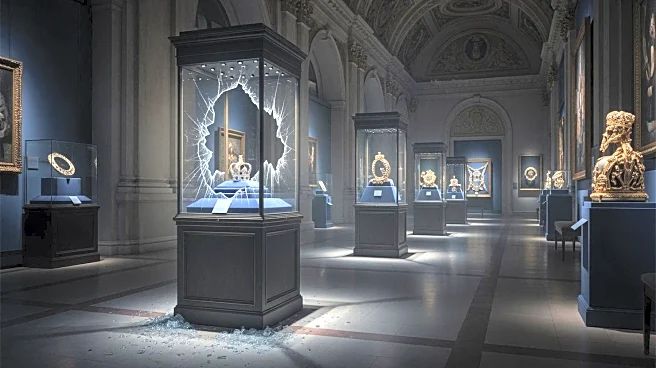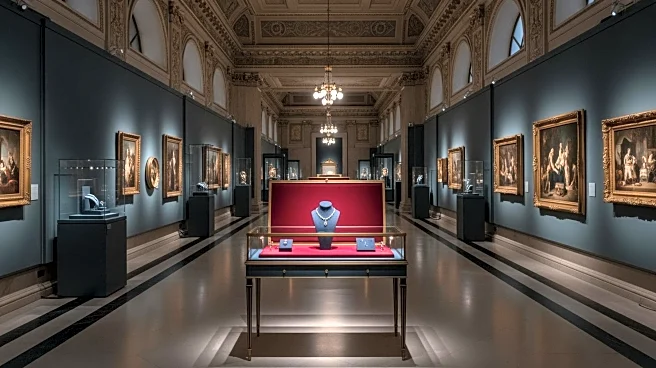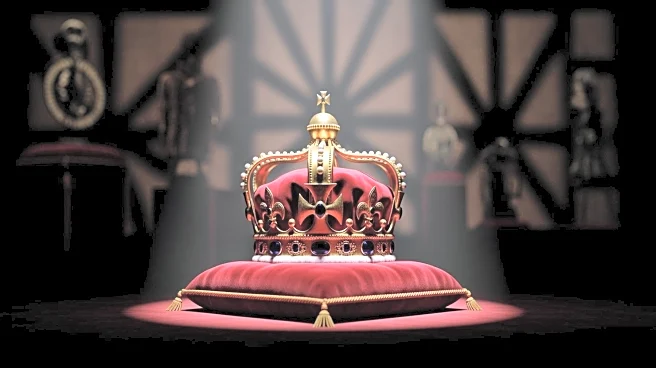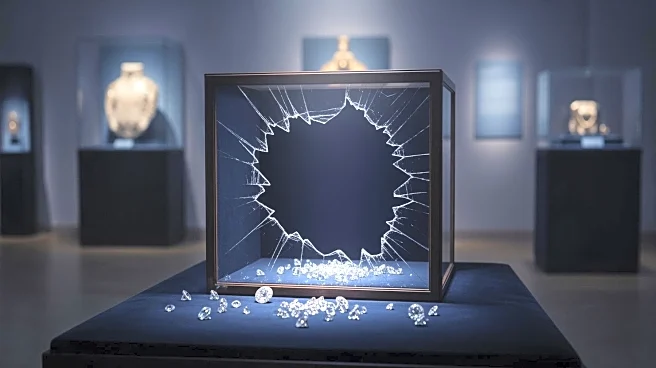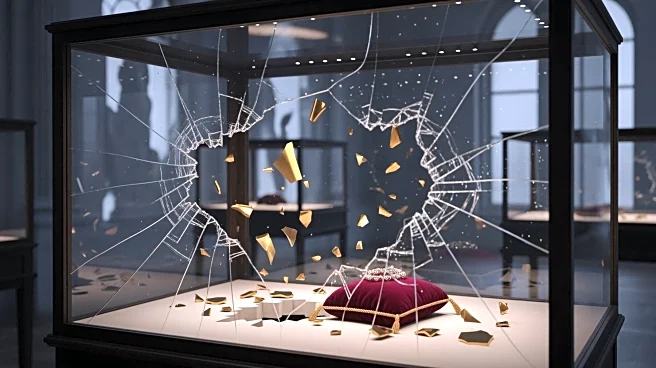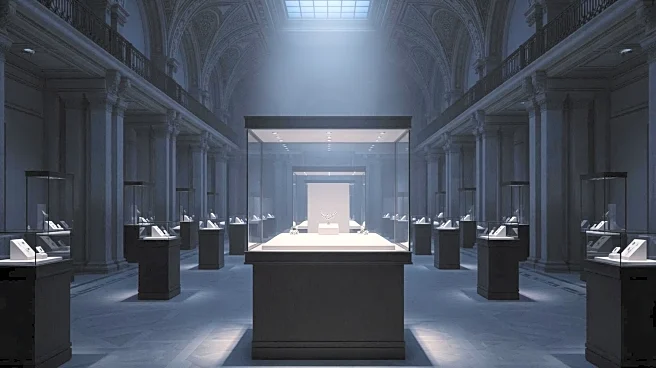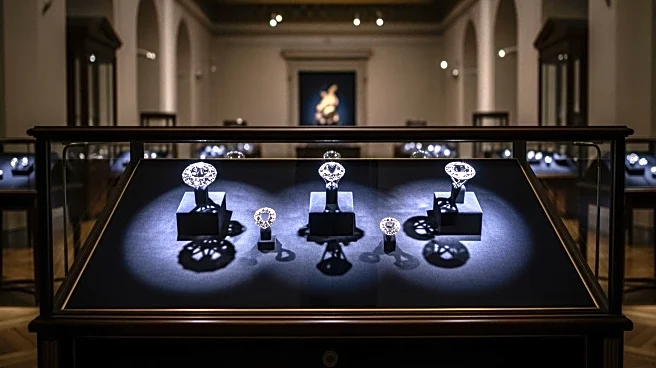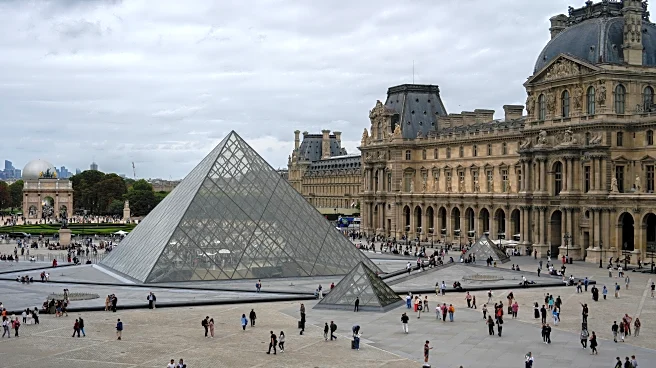What's Happening?
The Louvre Museum in Paris was closed following a robbery in which thieves stole valuable crown jewels from the Apollo Gallery. The heist occurred around 9:30 AM and lasted between six and seven minutes.
Four unarmed individuals threatened guards with angle grinders and used a basket lift to access the gallery, where they forced a window and broke display cases. French President Emmanuel Macron condemned the theft as an attack on cherished heritage, promising recovery of the stolen works and justice for the perpetrators. Culture Minister Rachida Dati confirmed no injuries occurred and investigations are underway. The museum announced its closure for exceptional reasons, with forensic work and inventory compilation in progress.
Why It's Important?
The robbery at the Louvre Museum highlights vulnerabilities in security at one of the world's most renowned cultural institutions. The theft of historically significant items, including pieces from the Napoleon and Empress's jewelry collection, underscores the challenges museums face in protecting valuable artifacts. The incident may prompt museums globally to reassess security measures, potentially leading to increased investment in surveillance and protective technologies. The cultural impact is significant, as the stolen items hold immense historical value, affecting both national heritage and international cultural preservation efforts.
What's Next?
Authorities are conducting forensic investigations and compiling a precise inventory of the stolen objects. The French government is likely to enhance security protocols at the Louvre and other cultural sites to prevent future incidents. The recovery of the stolen items is a priority, with international cooperation potentially required if the jewels are smuggled across borders. The museum's closure may affect tourism and visitor access, prompting discussions on balancing public access with security needs.
Beyond the Headlines
The theft raises ethical questions about the protection of cultural heritage and the responsibilities of institutions to safeguard historical artifacts. It may lead to debates on restitution and the legacy of looted art, particularly in the context of Napoleonic-era acquisitions. The incident could influence cultural policy, encouraging museums to adopt more stringent security measures while maintaining accessibility for educational and cultural enrichment.


